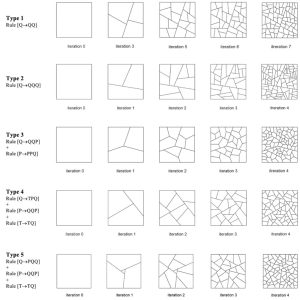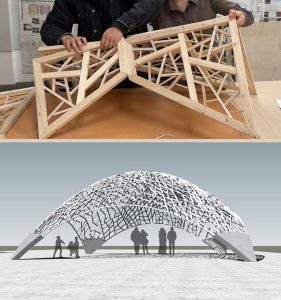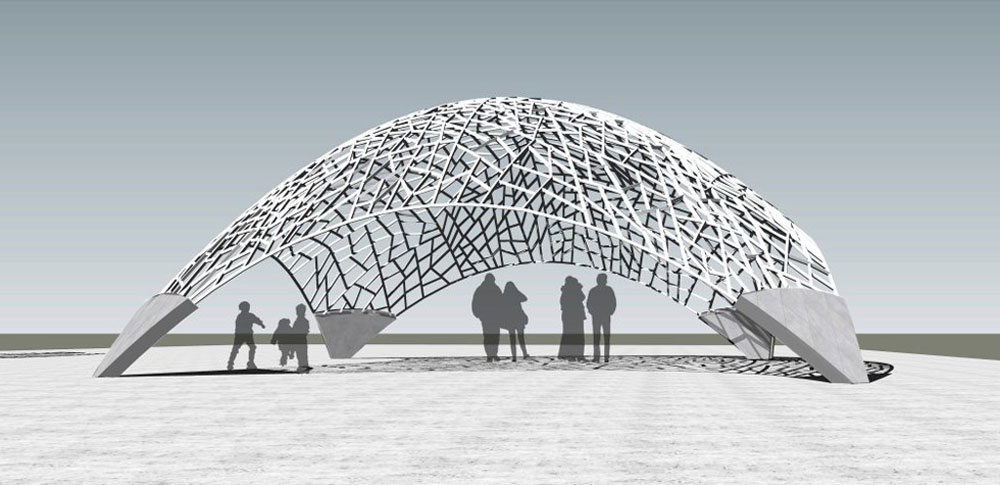Like broken ice: Traditional Chinese “ice beam” window grilles not only look stunning, but also have special stable properties, as a researcher has now discovered. Because the mesh geometries are generated randomly and asymmetrically, they can withstand high loads. Does this mean that the historical design will return in the future as a basic framework for roofs and domes?
Architecture should ideally be aesthetic and functional. To achieve this, architects also draw on architectural designs and styles from the past. For example, clay has been rediscovered as a building material in some places. It can be obtained and disposed of in an environmentally friendly manner and also achieves good insulation values. But if you prefer something more subtle and elegant, you can instead take inspiration from traditional Chinese window grilles, the so-called “Binglei” or ice ray grilles.
Window bars are made of ice melt
As the name suggests, ice blasting grates are meant to be reminiscent of the intricate patterns of crushed ice or glazed ceramic surfaces. It symbolizes the melting of ice and the approaching beginning of spring. At first glance, the networks appear chaotic and randomly arranged, but they are based on simple geometric rules, as now scientifically defined by Iasef Md Rian of Xi'an Jiaotong University-Liverpool for the first time.
Ryan came up with the idea for his research project while walking in parks in the Chinese city of Suzhou. “Chinese gardens have a more natural order in their layout and design. The design of the ice ray window is one manifestation of that,” says the former architecture professor. “So I was immediately drawn to studying the geometric principles behind ice ray patterns.”

Surprisingly good stats
The result: Ryan was able to identify a total of five different types of traditional window grilles, each based on its own similar geometric rules. The planning process always starts with the square as the basic shape, which is then divided into smaller and smaller quadrilaterals or triangles in the following steps. Their proportions are very different and by no means exactly the same.
However, the random pattern eventually generated is not only beautiful to look at, but also has special stable properties, as Ryan discovered. “The random arrangement of ice blasting grids creates multi-angle connections that transform the window with a range of resulting forces and even pressure distribution, achieving a unique level of rigidity.” Since the patterns served as protective nets, there was a high level of rigidity. Stability even then was helpful.
It can also be seen how well random networks hold together in nature, including the structure of our internal bone tissue. Like traditional window grilles, they are by no means solid, but consist of randomly arranged spongy bony trabeculae, called spongiosum. “It offers a balance between high rigidity, which contributes to flexibility, and an amazingly light structure,” Ryan explains.

Will we soon be building roofs out of ice rays?
Due to their special characteristics, the ice ray grid pattern could make a comeback soon, and not just as protection against thieves and so on. “I'm extending the application of this pattern to curved surfaces,” Ryan explains. This means that the nets could also be used in the future as a supporting structure for so-called grid structures – shell-shaped constructions that form the surfaces of some stadiums, for example.
Currently, lattice shells consist of regular and symmetrical shapes. However, Ryan's “chaos engineering” could give them much greater stability in the future than they currently do. (Frontiers of Architectural Research, 2024; doi: 10.1016/j.foar.2023.12.009)
Source: Xi'an Jiaotong-Liverpool University (XJTLU)
April 4, 2024 – Anna Manz

“Total coffee aficionado. Travel buff. Music ninja. Bacon nerd. Beeraholic.”







More Stories
Researchers detect extremely high-energy gamma rays
Anxiety disorders in old age increase the risk of dementia
Researchers are particularly fascinated by these exoplanets.